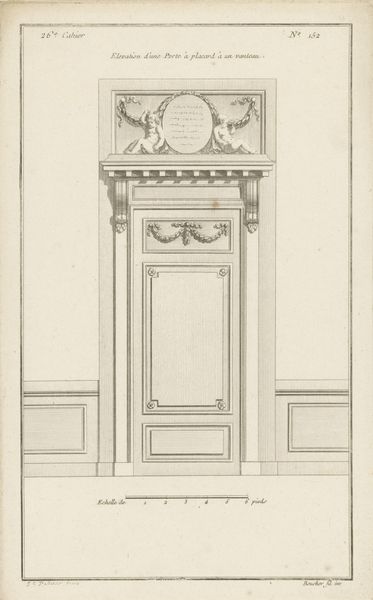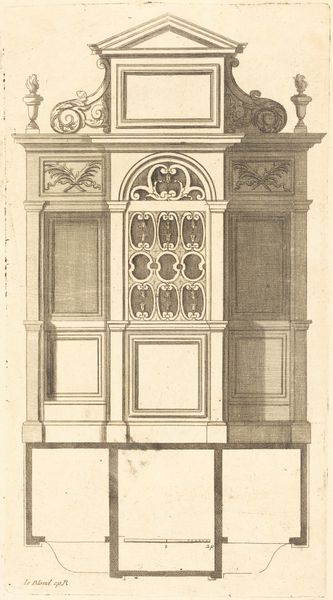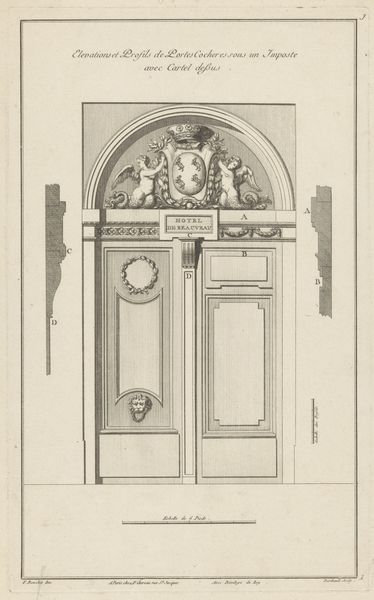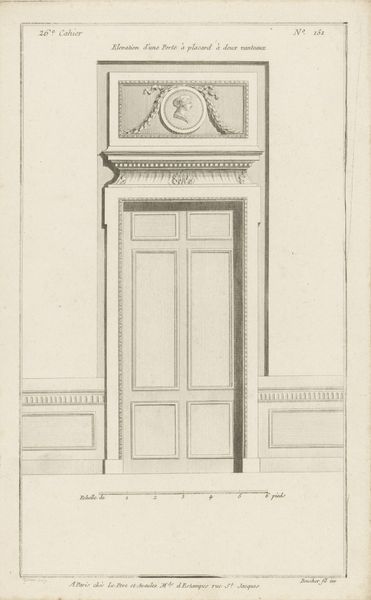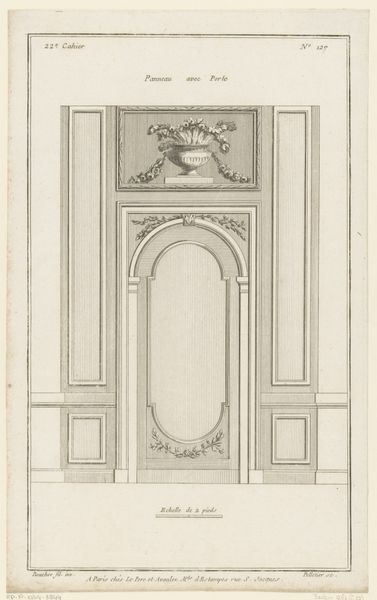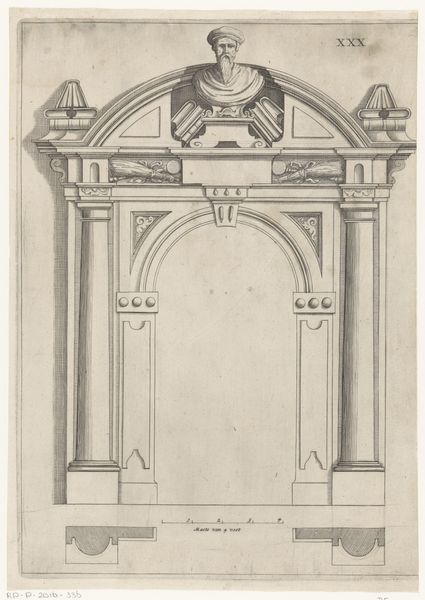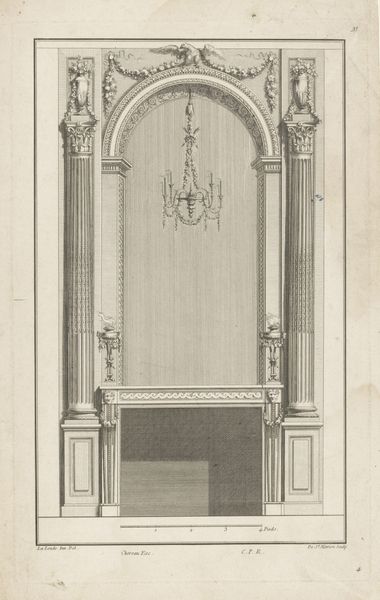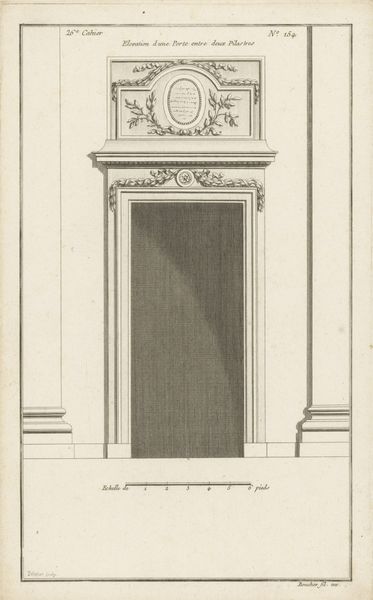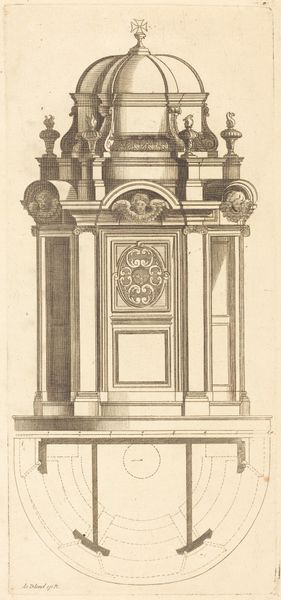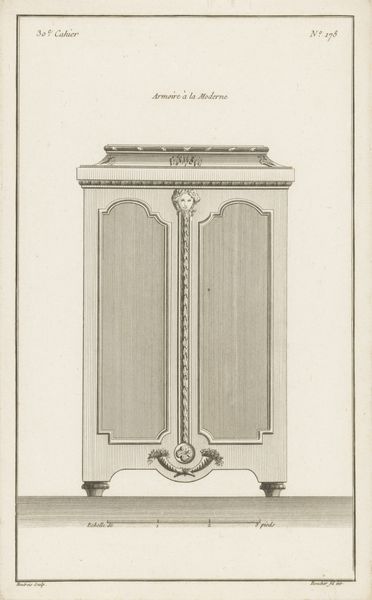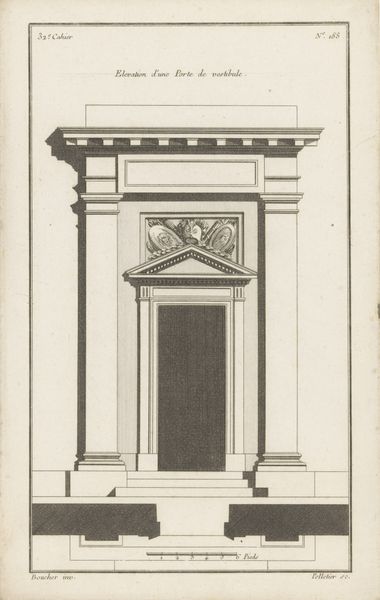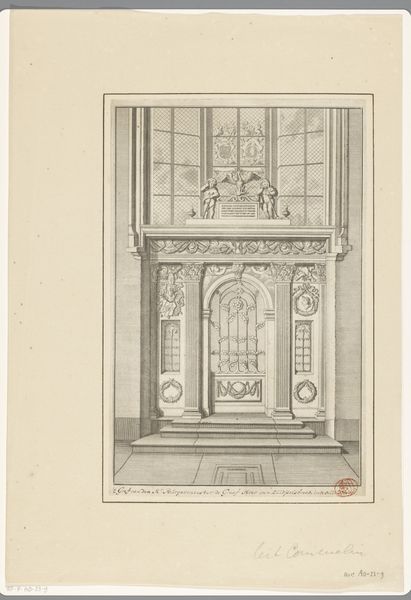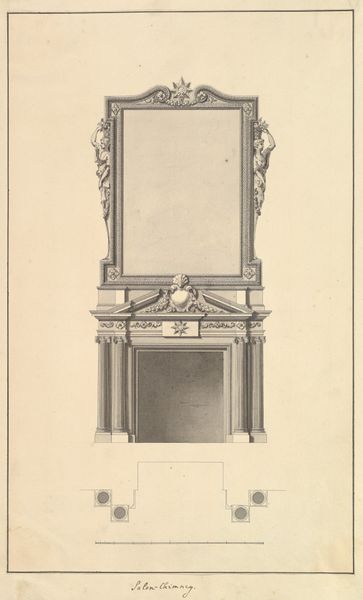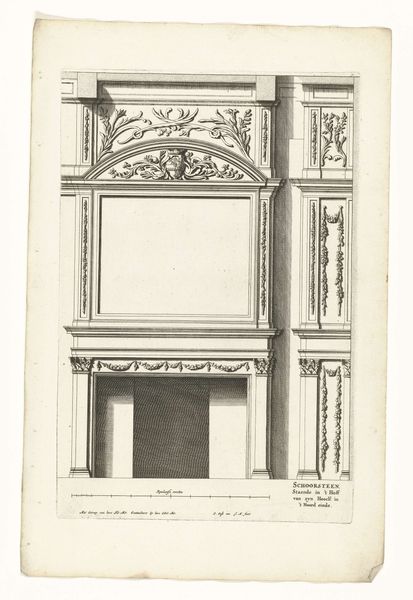
Dimensions: height 177 mm, width 132 mm
Copyright: Rijks Museum: Open Domain
Caspar Jacobsz. Philips created this print of the Raampoort in Amsterdam using etching, a printmaking technique, around 1776. The crisp lines and tonal variations are achieved by drawing through a wax-coated metal plate, then submerging it in acid. The acid bites into the exposed metal, creating recessed lines that hold ink. The printmaker then carefully applies pressure to transfer the ink onto paper, resulting in the detailed image we see here. This wasn't just a means of artistic expression; prints like these played a crucial role in disseminating information and shaping public perception during the 18th century. The Raampoort, a physical gateway to the city, is here transformed into an ideological one, carefully presented for public consumption. The clean lines and architectural details of the gateway become symbolic of Amsterdam’s order and prosperity. The labor-intensive etching process itself reflects the period's emphasis on craft and precision, while the print's function highlights the growing importance of mass communication and civic identity. This artwork, therefore, is not just an image, but a carefully crafted representation of Amsterdam’s self-image during a time of significant social and economic change.
Comments
No comments
Be the first to comment and join the conversation on the ultimate creative platform.
